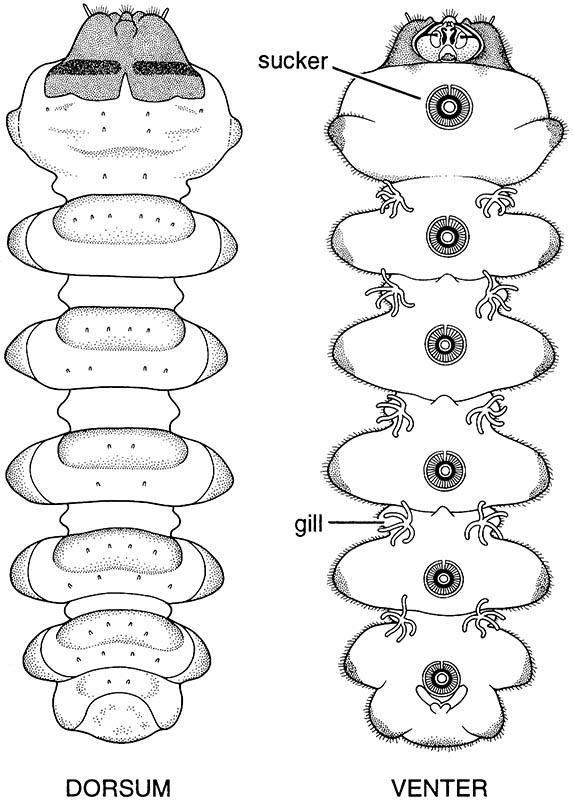10.3.5. Behavioral ventilation
A consequence of the slow diffusion rate of oxygen through water is the development of an oxygen-depleted layer of water that surrounds the gaseous uptake surface, whether it be the cuticle, gill, or spiracle. Aquatic insects exhibit a variety of ventilation behaviors that disrupt this oxygen-depleted layer. Cuticular gaseous diffusers undulate their bodies in tubes (Chironomidae), cases (young caddisfly nymphs), or under shelters (young lepidopteran larvae) to produce fresh currents across the body. This behavior continues even in later-instar caddisflies and lepidopterans in which gills are developed. Many ungilled aquatic insects select their positions in the water to allow maximum aeration by current flow. Some dipterans, such as blepharicerid (Fig. 10.4) and deuterophlebiid larvae, are found only in torrents; ungilled simuliids, plecopterans, and case-less caddisfly larvae are found commonly in high-flow areas. The very few sedentary aquatic insects with gills, notably black-fly (simuliid) pupae, some adult dryopid beetles, and the immature stages of a few lepidopterans, maintain local high oxygenation by positioning themselves in areas of well-oxygenated flow. For mobile insects, swimming actions, such as leg movements, prevent the formation of a low-oxygen boundary layer.
Although most gilled insects use natural water flow to bring oxygenated water to them, they may also undulate their bodies, beat their gills, or pump water in and out of the rectum, as in anisopteran nymphs. In lestid zygopteran nymphs (for which gill function is discussed in section 10.3.3), ventilation is assisted by “pull-downs” (or “push-ups”) that effectively move oxygen-reduced water away from the gills. When dissolved oxygen is reduced through a rise in temperature, Siphlonurus nymphs elevate the frequency and increase the percentage of time spent beating gills.


